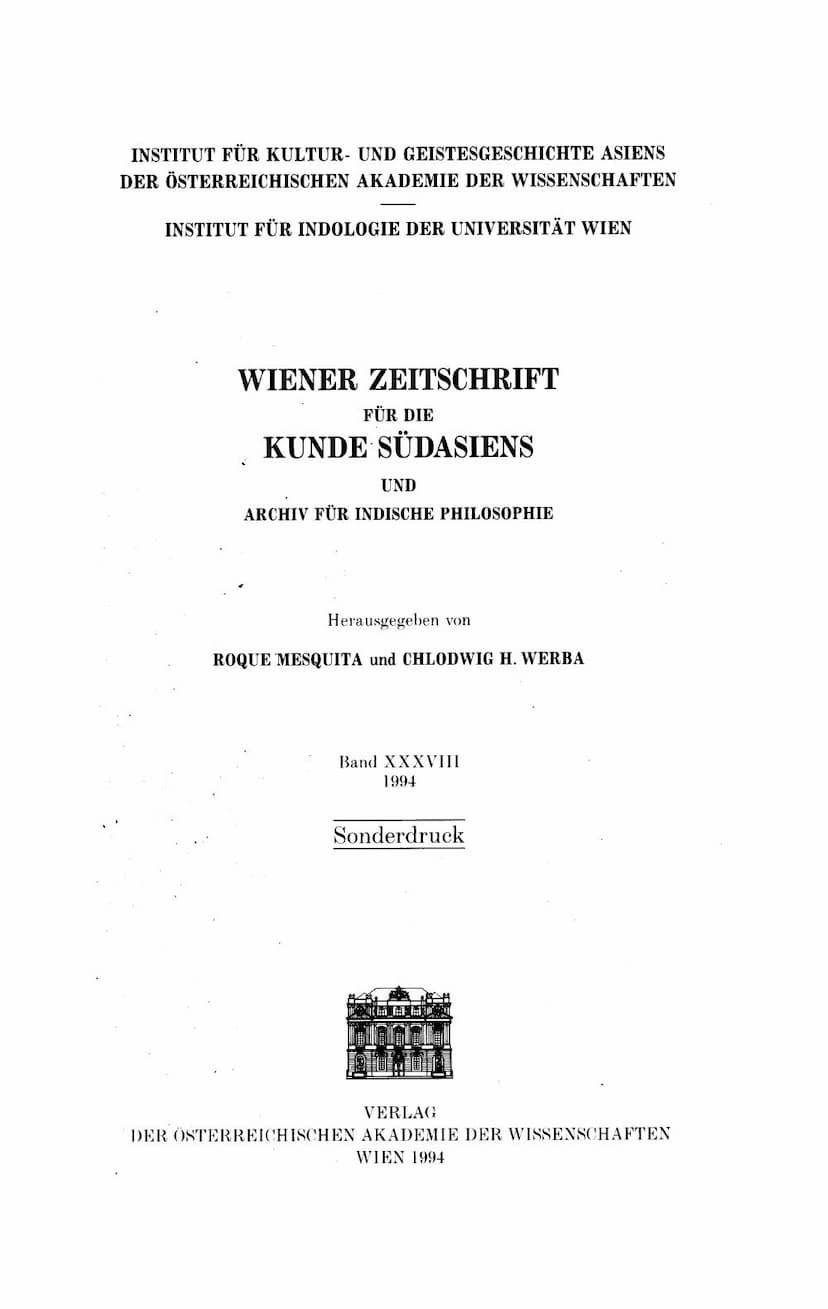Quotations In Malaygiris Commentary On Nandisutra
Added to library: September 2, 2025

Summary
This document is a scholarly article titled "Quotations in Malayagiri's Commentary on the Nandisutra" by Muni Jambuvijaya, published in the Wiener Zeitschrift für die Kunde Südasiens und Archiv für Indische Philosophie (WZKS), Volume XXXVIII, in 1994. The article focuses on identifying and tracing the original sources of philosophical quotations found in the commentary of Malayagiri, a prominent Jain scholar of the 12th century, on the Nandisutra.
Here's a breakdown of the key points:
-
Context: The article begins by situating Jain literature within a four-fold classification (dravyānuyoga, gaṇitānuyoga, caraṇakaraṇānuyoga, dharma kathanuyoga). It mentions the 45 Agamas (canonical texts) accepted by the Shvetambara tradition, which are primarily written in Ardhamagadhi. These texts were later commented upon by various acharyas in Prakrit and, as Sanskrit gained prominence, in Sanskrit.
-
Malayagiri's Commentary: The Nandisutra, a Jain Agama, is noted for its detailed description of the five types of knowledge (jñānapañcaka). Malayagiri's commentary (vṛtti) on this sutra, published in 1973, is highlighted for its philosophical discussions, which often involve quotations from other texts.
-
Key Focus: Identifying Quotations: The core purpose of Jambuvijaya's article is to meticulously identify the original sources of these quotations within Malayagiri's commentary. The article provides specific examples, referencing page numbers, line numbers, and sometimes verse numbers from Malayagiri's commentary (M.S.C.N. - Malayagiri's Sutra Commentary on Nandisutra) and comparing them with the identified original texts.
-
Prominent Source: Vārtikālaṅkāra: A significant portion of the quotations identified are from the Vārtikālaṅkāra, a commentary on Dharmakirti's Pramāṇavārttika by Prajñākaragupta. The article notes that the Vārtikālaṅkāra itself was published in 1953 by the Kashi Prasad Jayaswal Research Institute. The author emphasizes the utility of these identified quotations for future research and critical editions of the Vārtikālaṅkāra.
-
Other Sources: Besides the Vārtikālaṅkāra, quotations are also traced to:
- Śāstra Vārtā Samuccaya by Haribhadra Suri.
- Viṣṇu Purāṇa.
- Dvātriṁśikā by Siddhasena Divākara.
- Vaiśeṣika Sūtra.
- Mīmāṁsāślokavārttika by Kumārilabhaṭṭa.
- Vākyapadīya.
- Aptamīmāṁsā (likely by Samantabhadra).
- Mahābhārata.
- Laghīyastraya by Akalanka.
-
Methodology and Challenges: The author explains that considerable effort was made to trace the sources. Square brackets are used to indicate found sources, while empty brackets signify that the original source could not be located. The article also points out discrepancies and potential textual variations between Malayagiri's commentary and the identified original texts, suggesting possible emendations or alternative readings in the Vārtikālaṅkāra. For example, a passage attributed to Prajñākaragupta is noted to actually exist in Dharmakirti's Pramāṇavārttika.
-
Significance: The article's contribution lies in its detailed scholarly work of source criticism. By meticulously documenting and verifying these quotations, it enriches our understanding of the intellectual lineage and intertextual relationships within ancient Indian philosophical traditions, particularly the connections between Jain and Buddhist thought. It provides valuable data for scholars studying Jainism, Indian philosophy, and Buddhist logic.
In essence, Muni Jambuvijaya's article is a meticulous academic endeavor to map the intellectual landscape of Malayagiri's commentary on the Nandisutra by identifying and locating the philosophical arguments and statements he drew from various non-Jain and Jain philosophical works, with a particular focus on the influential Vārtikālaṅkāra.